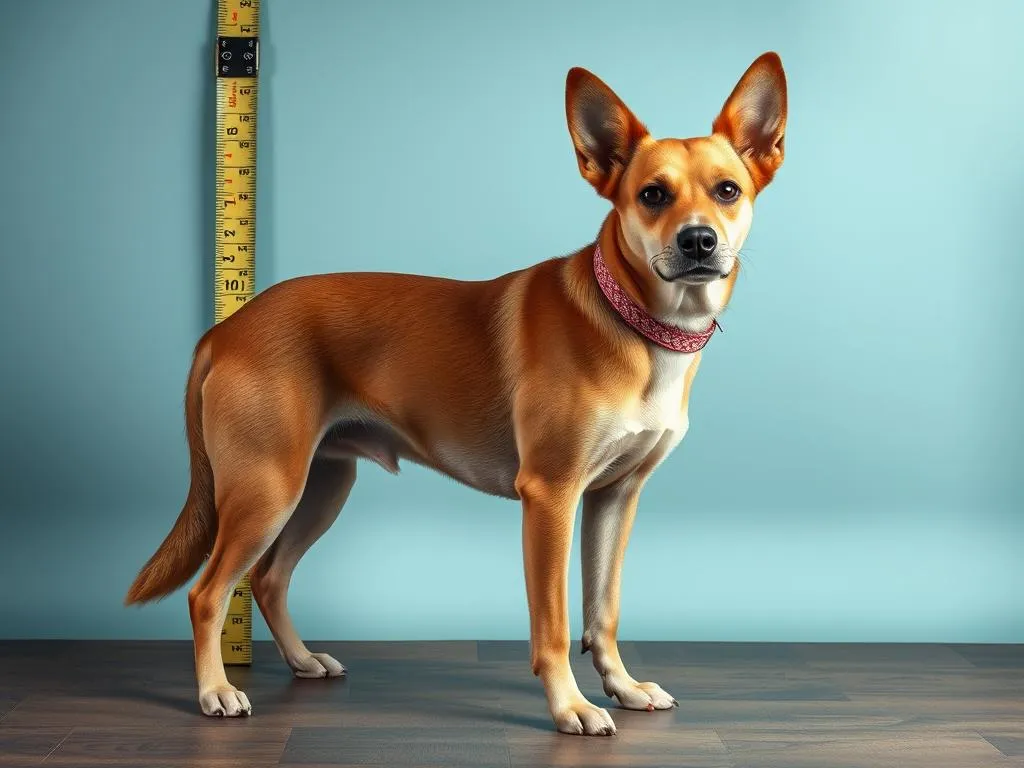
Measuring your dog’s height is a fundamental aspect of responsible pet ownership. Whether you’re preparing for a vet visit, buying the right harness, or determining if they can join you on a certain adventure, knowing how to measure a dog’s height accurately is crucial. In this guide, we’ll explore various methods and tools that will help you measure your furry friend effectively.
Understanding Dog Height
Definition of Dog Height
When we talk about a dog’s height, we typically refer to the withers height. The withers are the ridge between the shoulder blades, and this is the point from which height is measured. This measurement is important because it provides a standard way to understand the size of your dog, regardless of their body shape or breed.
Importance of Knowing Dog Height
Knowing your dog’s height is not just for bragging rights; it plays an essential role in several areas. For instance, height affects:
- Breed Classification: Many breed standards are based on height, which can help identify a dog’s breed if they are a mixed breed.
- Health Assessments: A dog’s height can influence their overall health profile, including potential risks for certain conditions.
- Selecting Appropriate Gear: From harnesses to crates, knowing your dog’s height ensures that you select the right gear that fits properly and is safe.
Tools Needed to Measure Dog Height
Measuring Tape
The primary tool you will need is a measuring tape. There are two types to consider:
- Flexible Measuring Tape: This is great for wrapping around your dog’s body but can be less accurate for height measurement.
- Rigid Measuring Tape: A straight, rigid tape or yardstick is ideal for getting an accurate height measurement.
Level Surface
Always measure your dog on a flat, level surface. This ensures that the measurement is accurate. Avoid measuring on soft surfaces like grass or carpet, as these can compress and throw off your results.
Additional Tools (optional)
- Height Chart or Specialized Dog Measuring Devices: These can offer more precision, especially for larger breeds.
- Digital Apps: Some apps allow you to track your dog’s growth over time, which can be especially useful for puppies.
Methods to Measure a Dog’s Height
The Standard Method
Measuring your dog with a tape measure is straightforward. Here’s how to do it:
- Position Your Dog: Stand your dog on all fours, ensuring they are straight and calm. It’s best if they are facing forward.
- Find the Withers: Locate the highest point of the shoulder blades (the withers).
- Use the Measuring Tape: Hold one end of the tape at the ground and extend it up to the withers. Make sure the tape is straight and not sagging.
- Read the Measurement: Take note of the height in inches or centimeters.
Tips for Ensuring Accuracy
- Calm Your Dog: Ensure your dog is relaxed, as a tense posture can affect the measurement.
- Check Alignment: Make sure your dog is standing straight; if they lean or sit, it will skew the result.
Using a Measuring Stand
A measuring stand is a tool designed to help you measure your dog’s height more easily and accurately, especially for larger breeds. Here’s how to use one:
- Guide Your Dog onto the Stand: Encourage your dog to walk onto the measuring stand and into position.
- Align the Measuring Bar: Adjust the measuring bar so that it rests gently on the withers without pushing down.
- Read the Measurement: Check the height indicated on the stand’s scale.
Advantages of Using a Stand
- Consistency: Measuring stands provide uniformity in measurements, making them particularly useful for show dogs.
- Ease of Use: They can be easier to manage, especially with larger dogs that may be difficult to measure on the ground.
Measuring for Specific Breeds
Some breeds have unique characteristics that may require special considerations when measuring height. For instance, short-legged breeds like Dachshunds or Basset Hounds can be measured in the same way but may require a lower measuring surface to ensure accuracy.
For mixed breeds, it is important to consider the physical traits of both parent breeds. Always measure at the withers for consistency, and compare the measurements to breed standards if you’re curious about their classification.
Tips for Measuring Your Dog Safely and Comfortably
Creating a Calm Environment
A calm environment can significantly influence how well your dog cooperates during measurement. Here are some tips:
- Choose a Quiet Space: Avoid noisy or distracting areas.
- Use Positive Reinforcement: Offer treats or praise to encourage your dog to stand still during the process.
Handling Anxious Dogs
If your dog is anxious or fearful, here are some strategies:
- Take Your Time: Don’t rush the process. Allow your dog to familiarize themselves with the measuring area.
- Gentle Restraint: If necessary, have someone gently hold the dog to keep them steady while you measure.
Involving Others
Having another person can make the process smoother. One person can hold the dog and keep them calm, while the other takes the measurement. This can be particularly helpful for larger or more energetic breeds.
What to Do With the Measurements
Recording the Measurements
Keeping track of your dog’s height is essential for various reasons:
- Growth Tracking: Puppies grow quickly, and regular measurements can highlight growth patterns.
- Health Management: Documenting height can help you recognize any sudden changes that may indicate health issues.
Using Height for Health Assessments
Understanding your dog’s height can influence:
- Dietary Needs: Larger dogs generally have different nutritional requirements than smaller breeds.
- Exercise Requirements: Height can help determine the intensity and type of exercise suitable for your dog.
Choosing the Right Gear
When selecting accessories such as harnesses, collars, or crates, knowing your dog’s height ensures a proper fit. Here’s a simple guide to gear selection based on height:
- Harnesses: Measure for both height and girth to ensure a snug fit.
- Crates: Choose a crate that allows your dog to stand up comfortably without hitting their head.
- Clothing: For dog apparel, consider both height and overall body shape.
Common Mistakes to Avoid
Incorrect Positioning of the Dog
Proper positioning is key. Dogs should be standing straight with their legs evenly spaced. If they are slouched or sitting, the measurement will be inaccurate.
Failure to Measure at the Right Time
Always measure when your dog is standing straight. If you’re measuring a puppy, do this regularly to track growth, but always ensure they are in a standing position.
Not Checking for Growth Changes
Regular measurements are especially important for puppies, as they grow rapidly. Skipping this step can lead to missed changes that might affect health or gear fit.
Conclusion
Measuring your dog’s height is an important task that every responsible pet owner should undertake. Regularly checking and recording your dog’s height can help you make informed decisions regarding their health and well-being. By following the tips and methods outlined in this guide, you can ensure that your furry friend is measured accurately and comfortably. Don’t forget to share your experiences and any questions in the comments below; your insights could help fellow dog owners!









